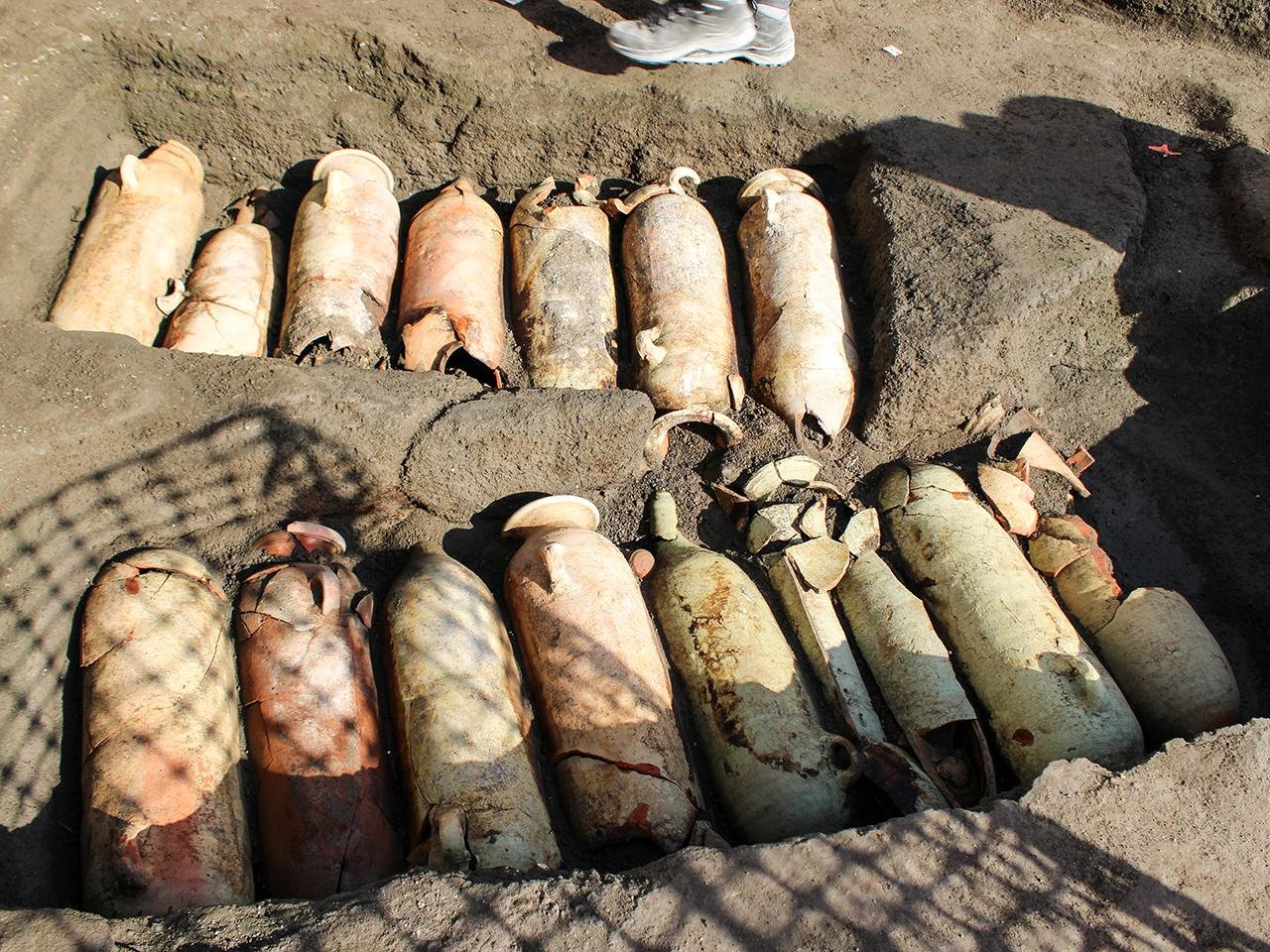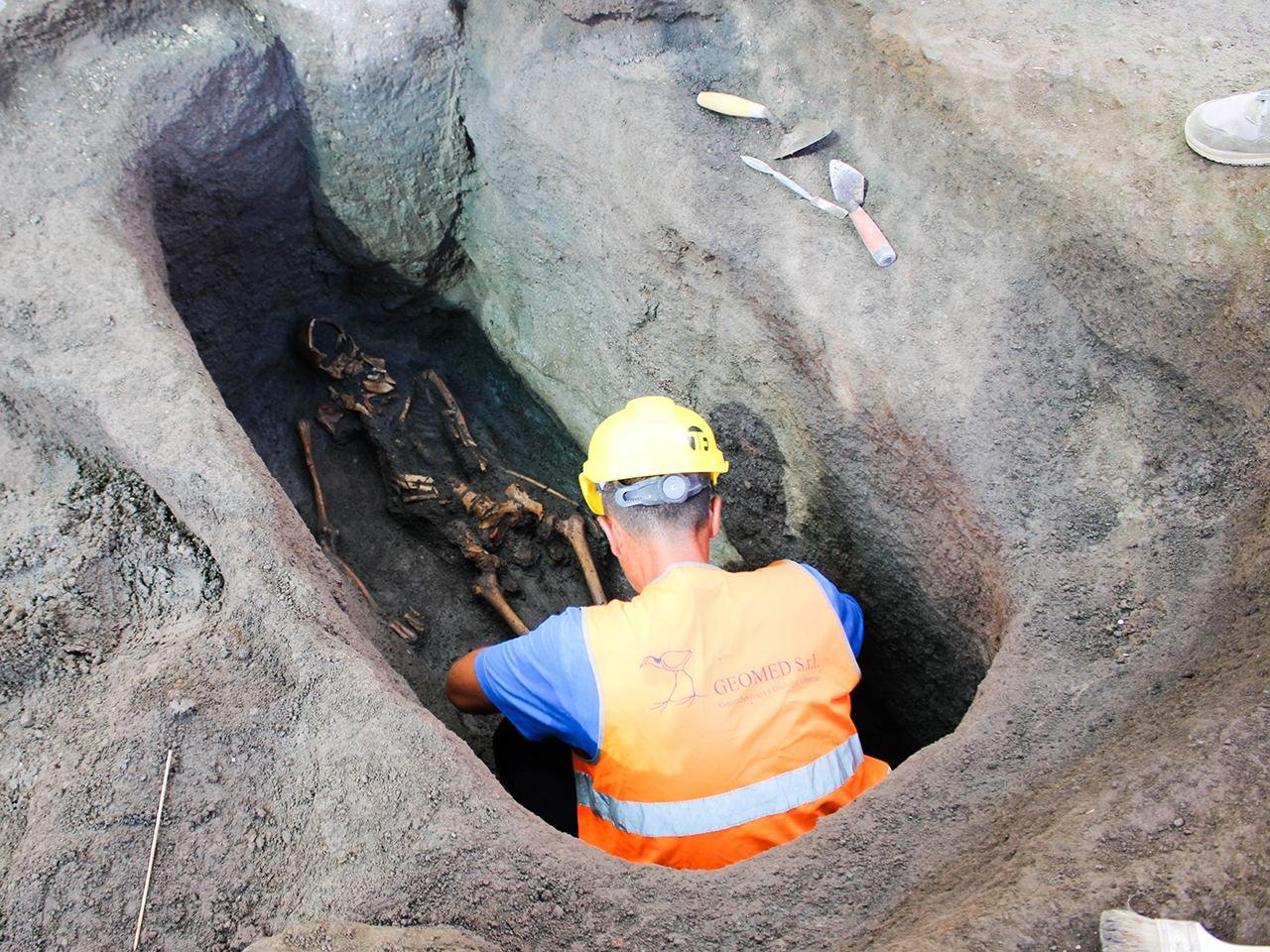Archaeological excavations in Pompeii have unearthed a significant pre-Roman necropolis dating back to between the 3rd and 1st centuries BCE.
 Amphorae-covered graves found in pre-Roman necropolis. Credit: Soprintendenza Archeologia Belle Arti e Paesaggio per L’area Metropolitana di Napoli
Amphorae-covered graves found in pre-Roman necropolis. Credit: Soprintendenza Archeologia Belle Arti e Paesaggio per L’area Metropolitana di Napoli
This discovery was made during the construction of an underground parking lot near the Pompeii Santuario railway station. The necropolis was discovered a quarter mile from the eastern edge of the Roman city, during modernization work on the railway line and the construction of the parking garage on Via Fucci.
The site, overseen by the Superintendence of Archaeology, Fine Arts and Landscape for the Naples Metropolitan Area, has yielded 35 earthen pit burials. These burials are characterized by their simple construction, covered with amphorae arranged in an alternating neck and tip formation. Notably, the amphorae, originating from North Africa, feature makers’ marks in the Punic language, also known as Carthaginian.
The burial site’s proximity to groundwater has preserved the skeletal remains remarkably well, allowing for detailed paleo-anthropological research. The graves contain sparse funerary objects, including small ceramic bottles (unguentarians) and several coins, reflecting the modest nature of the interments.
 One of the tombs discovered in Pompeii. Credit: Soprintendenza Archeologia Belle Arti e Paesaggio per L’area Metropolitana di Napoli
One of the tombs discovered in Pompeii. Credit: Soprintendenza Archeologia Belle Arti e Paesaggio per L’area Metropolitana di Napoli
Further analysis has revealed other pre-Roman objects within a nearby canal, likely ᴀssociated with destroyed funerary contexts. These artifacts include hundreds of tile fragments, preserved wooden objects, amphorae, and dolia – large earthenware vessels used for storage. Among the notable finds are 20 small volcanic stone columns, tiles stamped with Oscan inscriptions, and a stone head of a woman made from grey Campanian tufa, with traces of red paint still visible.
Archaeologists believe the canal was constructed following Sulla’s siege of Pompeii during the Social War (91–87 BCE), a conflict between the Roman Republic and several of its autonomous allies, including Pompeii. The siege led to extensive territorial reorganization and reconstruction of the city, evidenced by the artifacts found in the canal.
In addition to the necropolis, the excavations uncovered traces of a Roman-era agricultural system buried under the pumice from the 79 CE eruption of Mount Vesuvius. This system includes furrows and pits arranged in a north-south direction, near the ancient Sarno River. The fields were likely used to cultivate vegetables, supplying the markets and households of Roman Pompeii with fresh produce. Initial analyses of organic remains and pollen suggest that perennial artichokes were among the crops grown in these fields.
The excavation is part of a broader preventative archaeology effort, prompted by construction activities in historically rich areas. Speaking about the ongoing work, an official from the Superintendence stated, “Thanks to preventive archaeology and the synergistic action between the Superintendency, the Municipality, and EAV, important results are being achieved in the field of protection and enhancement of a territory of crucial historical and archaeological importance.”
Superintendence of Archaeology, Fine Arts and Landscape for the Naples Metropolitan Area





